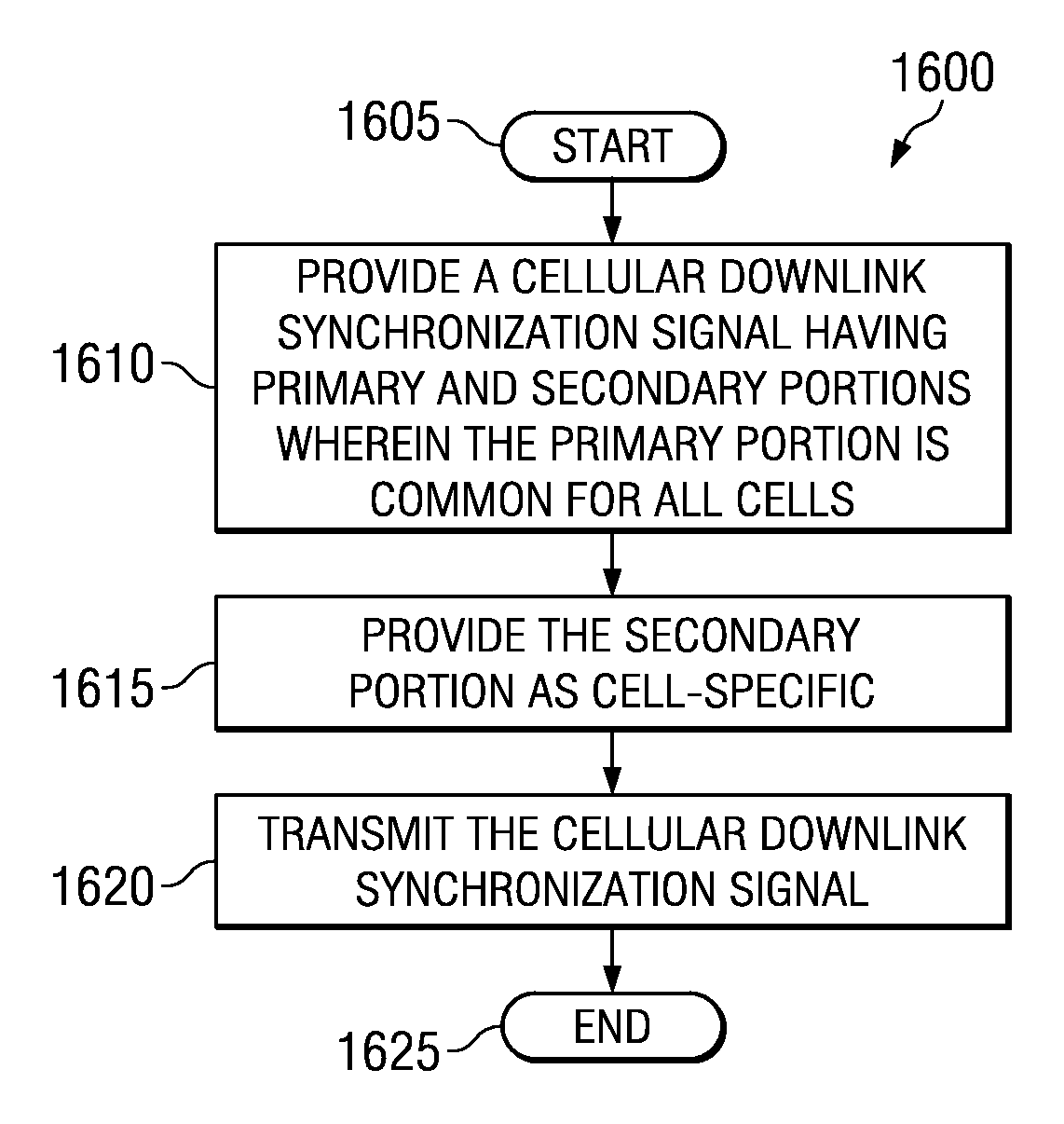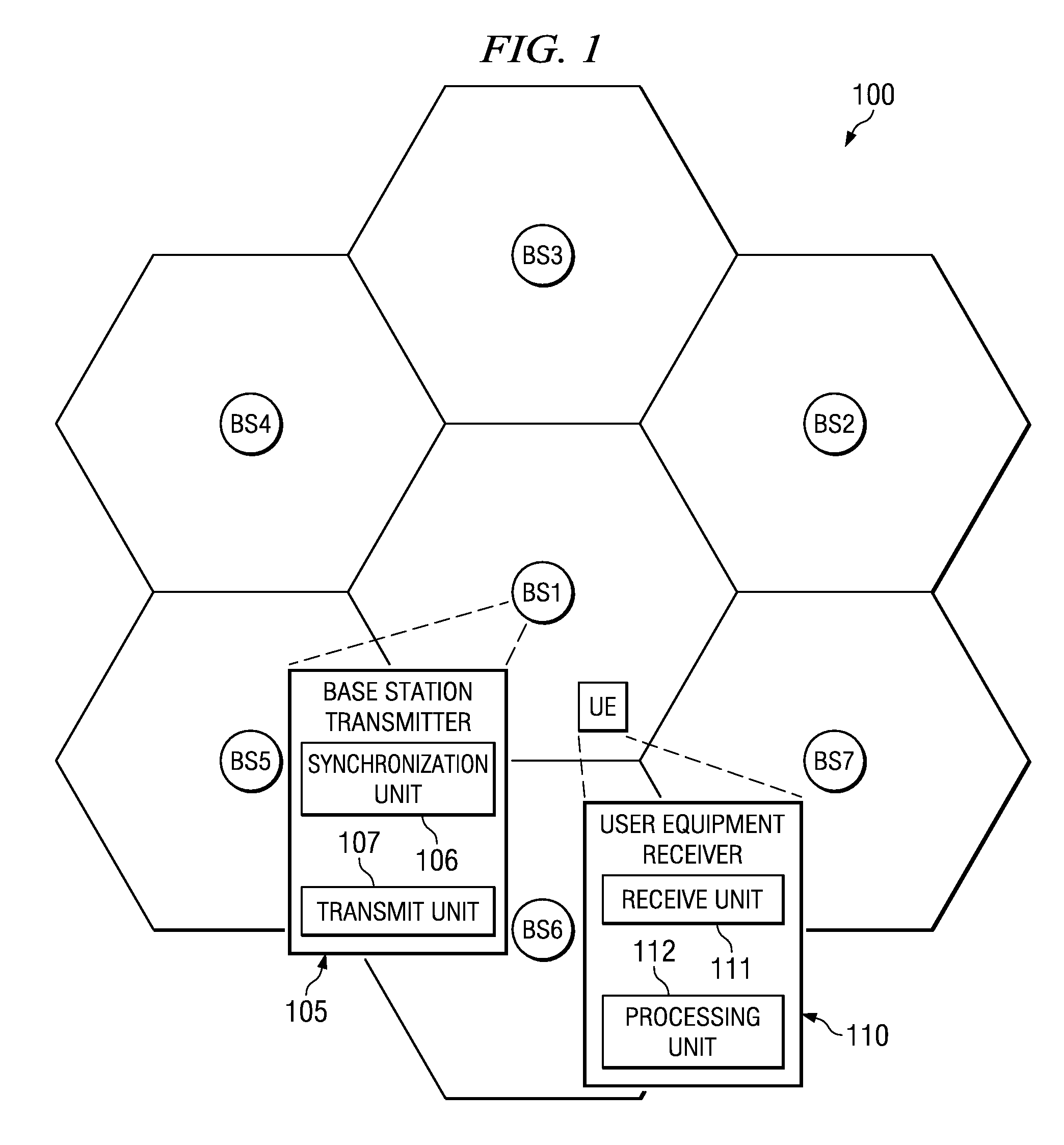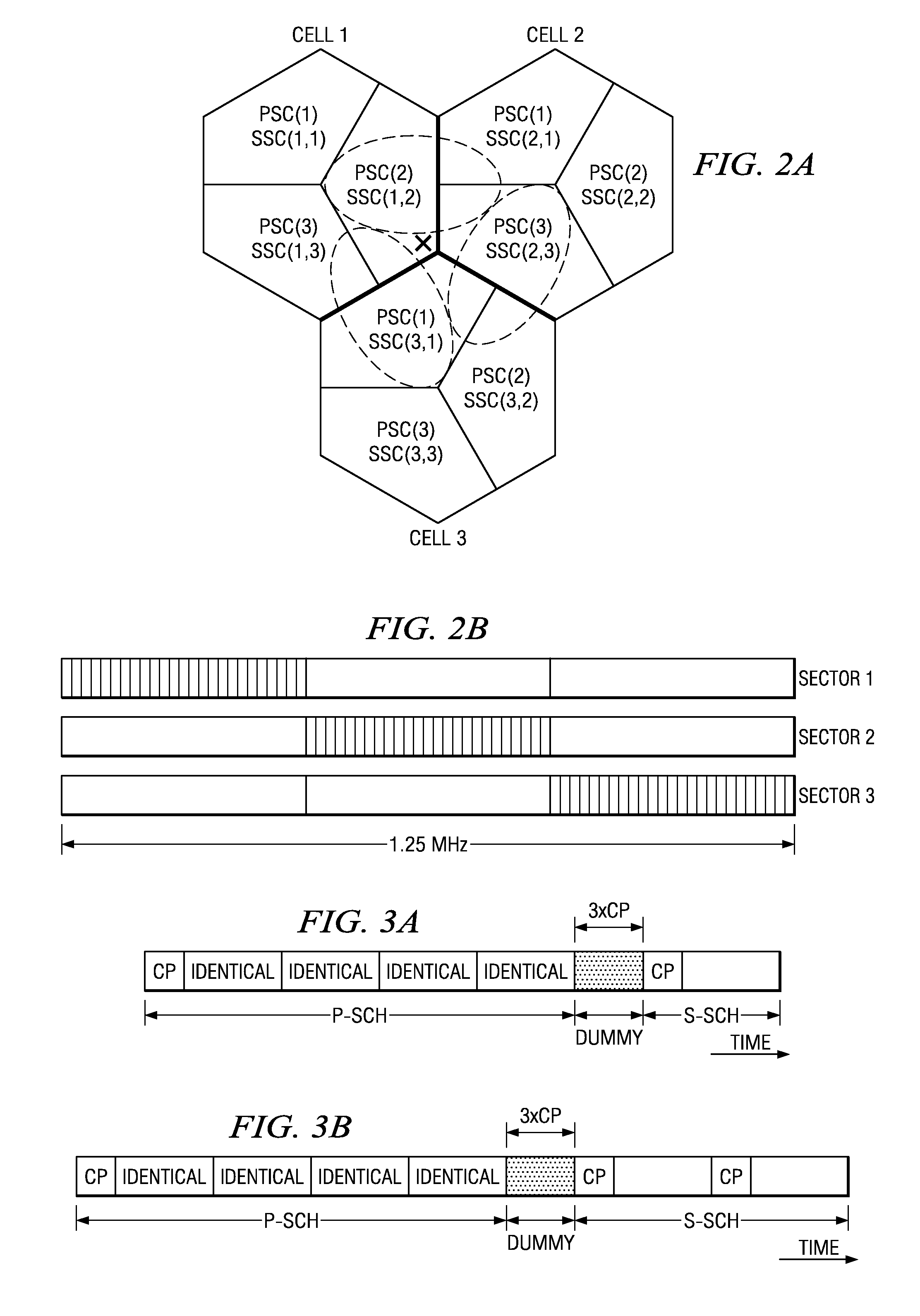Downlink synchronization for a cellular OFDM communication system
- Summary
- Abstract
- Description
- Claims
- Application Information
AI Technical Summary
Problems solved by technology
Method used
Image
Examples
Embodiment Construction
[0039]Referring initially to FIG. 1, illustrated is a diagram of an embodiment of a cellular network, generally designated 100, constructed in accordance with the principles of the present invention. The cellular network 100 includes a cellular grid having a centric cell and six surrounding first-tier cells. The centric cell employs a centric base station BS1 and the surrounding first-tier cells employ first tier base stations BS2-BS7, as shown. The cellular network 100 also includes user equipment UE, which is located in the centric cell.
[0040]The centric base station BS1 includes a base station transmitter 105 having a synchronization unit 106 and a transmit unit 107. In one embodiment, the synchronization unit 106 is configured to provide a cellular downlink synchronization signal having primary and secondary portions wherein the primary portion is common for all of the cells shown in FIG. 1. However, the secondary portion provides information that is specific to the centric cell...
PUM
 Login to View More
Login to View More Abstract
Description
Claims
Application Information
 Login to View More
Login to View More - R&D
- Intellectual Property
- Life Sciences
- Materials
- Tech Scout
- Unparalleled Data Quality
- Higher Quality Content
- 60% Fewer Hallucinations
Browse by: Latest US Patents, China's latest patents, Technical Efficacy Thesaurus, Application Domain, Technology Topic, Popular Technical Reports.
© 2025 PatSnap. All rights reserved.Legal|Privacy policy|Modern Slavery Act Transparency Statement|Sitemap|About US| Contact US: help@patsnap.com



